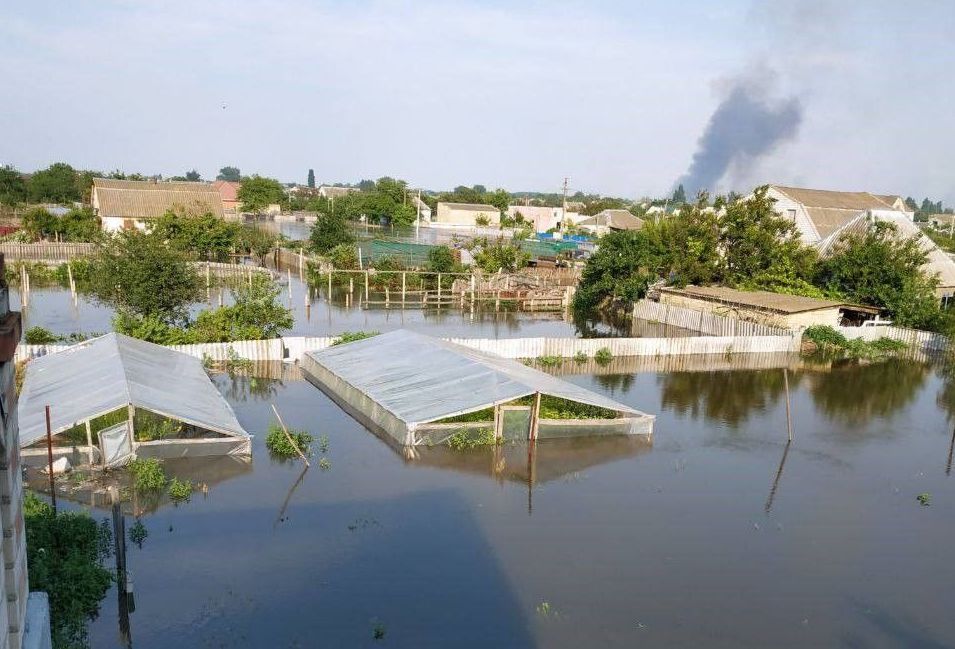IAEA says work ongoing to ensure Zaporizhzhia cooling pond has maximum amount of water after dam destruction.
Work is ongoing at the Russian-occupied Zaporizhzhia Nuclear Power Plant to ensure that it has the maximum amount of water needed to cool its reactors in the event it can no longer access the nearby Kakhovka reservoir, International Atomic Energy Agency (IAEA) said on June 7. The reservoir's level of water is continuing to drop following Russia's destruction[1] of the Kakhovka Hydroelectric Power Plant on June 6, the IAEA said in a statement[2] published on its website. The water level has dropped by around 2.8 meters since the dam was blown up, reaching 14 meters by 6 p.m. local time on June 7.
The hourly loss rate has slowed, however, from a peak of 11 centimeters per hour following the explosion to between five and seven on June 7. "If the level falls below 12.7 meters, the (plant) will no longer be able to pump water from the reservoir to the site," the statement read. "As the full extent of the dam's damage remains unknown, it is not possible to predict if and when this might happen.
If the current drop rate were to continue, however, the 12.7-meter level could be reached within the next two days." In order to prepare for the possibility the 12.7-meter level is reached in the next few days, the power plant is continuously replenishing its water reserves by fully utilizing the reservoir while still possible, the statement said. When full, the reserves will be sufficient to provide the nuclear plant with the water it needs to cool its six reactors for several months, according to the IAEA.
All of the nuclear power plant's are currently in shutdown mode, but nonetheless require cooling water to prevent fuel melt and the possible release of radioactive material. Director General of the International Atomic Energy Agency (IAEA), Rafael Grossi, announced[3] on June 6 that he would lead an IAEA mission to the plant after the Kakhovka dam demolition.
'They are destroying us.' People plea to escape flooded Russian-occupied areas Editor's note: For this story, we spoke to people living or having family in the Russian-occupied areas of Ukraine.
For their safety, they are identified by first name only. After destroying the Nova Kakhovka dam and stranding thousands of Ukrainians in the catastrophic flood zone, Russians prevent...
 [4]
[4]  Lili Bivings
Lili Bivings
Contributing editor
Lili is a contributing editor at the Kyiv Independent. She joined the Kyiv Post in 2021 first as a staff writer covering business news and then as business editor.
Lili is originally from Washington, D.C., but currently resides in New York where she recently completed a master's degree in Russian, Eastern European, and Eurasian affairs with a focus on Ukrainian studies at Columbia University. From 2017-2020 Lili served as a Peace Corps Volunteer in Ukraine, after which she interned with the Atlantic Council's Eurasia Center.
References
- ^ Russia's destruction (kyivindependent.com)
- ^ statement (www.iaea.org)
- ^ announced (kyivindependent.com)
- ^ 'They are destroying us.' People plea to escape flooded Russian-occupied areasEditor's note: For this story, we spoke to people living or having family in the Russian-occupied areas of Ukraine. For their safety, they are identified by first name only.
After destroying the Nova Kakhovka dam and stranding thousands of Ukrainians in the catastrophic flood zone, Russians prevent...
(kyivindependent.com)